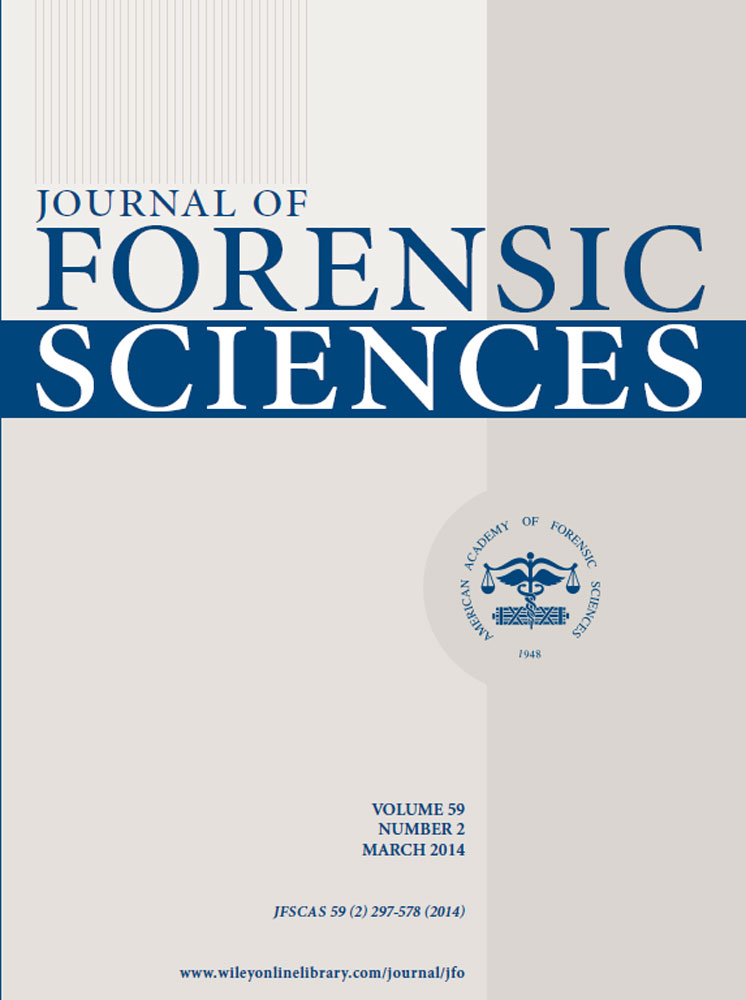Effect of Temperature on the Visualization by Digital Color Mapping of Latent Fingerprint Deposits on Metal
Abstract
Visualization of fingerprint deposits by digital color mapping of light reflected from the surface of heated brass, copper, aluminum, and tin has been investigated using Adobe® Photoshop®. Metals were heated to a range of temperatures (T) between 50°C and 500°C in 50°C intervals with enhancement being optimal when the metals are heated to 250°C, 350°C, 50°C, and 300°C, respectively, and the hue values adjusted to 247°, 245°, 5°, and 34°, respectively. Fingerprint visualization after color mapping was not degraded by subsequent washing of the metals and color mapping did not compromise the visibility of the fingerprint for all values of T. The optimum value of T for fingerprint visibility is significantly dependent of the standard reduction potential of the metal with Kendall's Tau (τ) = 0.953 (p < 0.001). For brass, this correlation is obtained when considering the standard reduction potential of zinc rather than copper.




